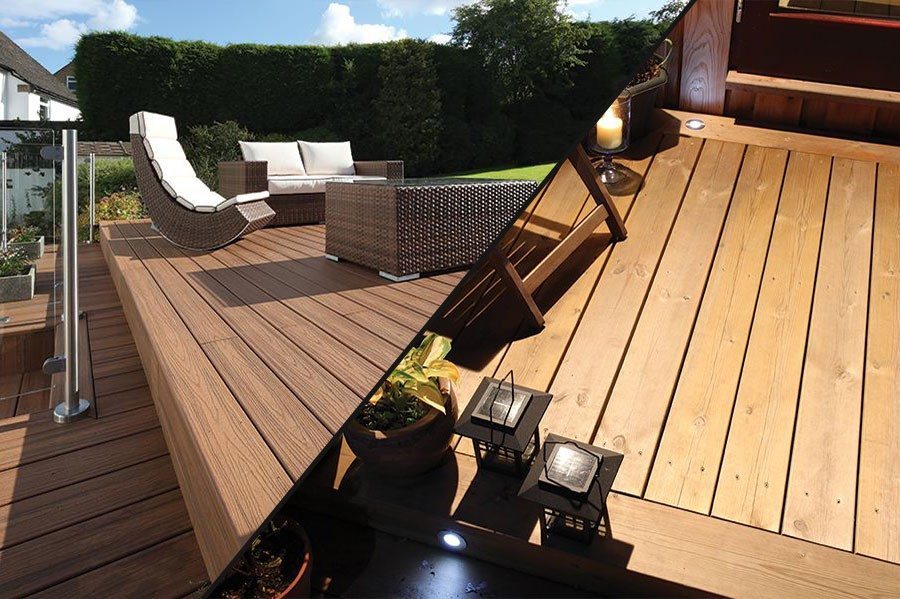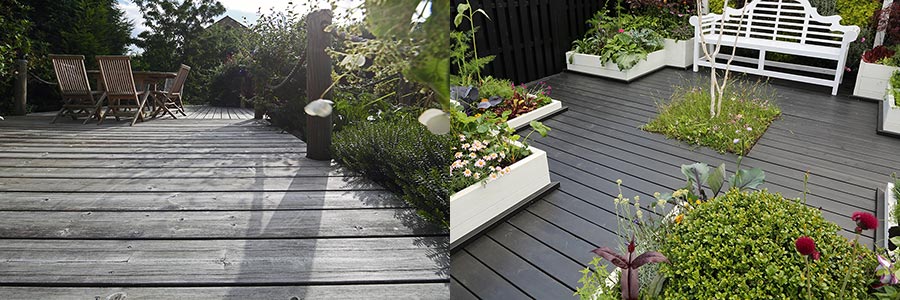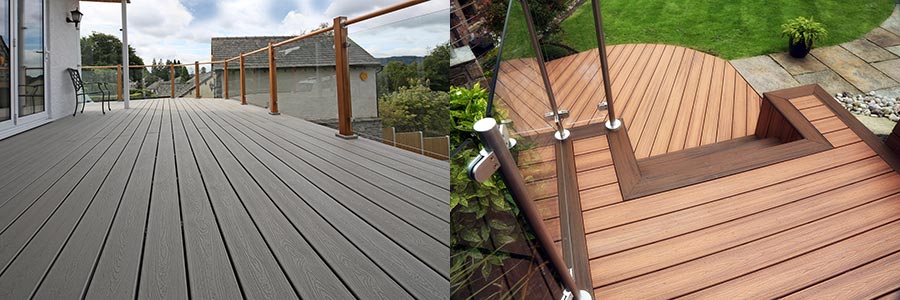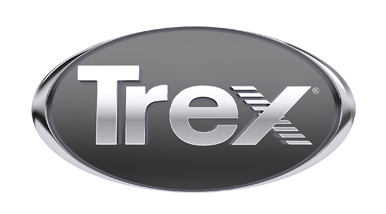Timber and composite decking: what’s the difference?

There has been plenty of hype about composite decking this year, with everyone from timber merchants, design magazines and radio presenters waxing lyrical about the growing trend to hit the UK decking market.
Despite that, timber decking remains the dominant force, occupying around 95 per cent of the UK market and continuing to grow in popularity all over the country.
With so much in depth discussion going on about timber and composite decking, it can be difficult to build up a clear picture of the differences between the two.
Here is a quick run-down of the basics:
Materials
Timber decking

Timber decking comes in softwood and hardwood variants, but softwood from evergreen coniferous trees such as Scandinavian Redwood, Spruce and Larch tend to be most popular. The wood is pressure-treated and can be stained to almost any colour the customer desires.
Composite decking

Composite decking comes in various forms, but tends to be comprised of a recycled plastic and wood compound with a hard plastic shell. Composite decking comes in a range of colours to suit all tastes.
Durability
Composite decking products such as Trex boast high levels of durability, having been specially engineered to be fade, stain, scratch and mold resistant. Trex backs this up by providing a limited 25-year guarantee to residential customers and a limited 10-year guarantee to commercial customers.
The durability of timber decking varies depending on the type of wood selected, the conditions it is exposed to and how well it is maintained, but most softwood decking features tightly packed wood fibres that give deckboards excellent strength and durability.
Sustainability
Composite decking materials have a particularly strong appeal to customers with sustainability in mind. Almost all composite deck boards are made from recycled materials – Trex recycles 1.5 billion shopping bags each year and has never felled a tree for deck manufacture in its 20-year history.
Sustainability has been a watchword in the timber industry for decades now, and softwood decking tends to have been cut from coniferous trees that grow back quickly. Arbordeck ensures that all its timber is supplied from sustainable sources and uses a Chain of Custody–certified system to provide traceability from forest to finished product.
Maintenance
Staining and cleaning is part and parcel of owning a timber deck, and timber purists view these processes as a labour of love. Without staining, timber decks can turn grey, and cleaning is important to remove mold and moss from the wood.
Composite decks, in contrast, are virtually maintenance free, needing just a basic clean with a composite deck cleaner or combination of soap, hot water and a soft bristle brush, on a semi-annual basis – a quality that even stone can’t compete with. Composite decks require no staining and will retain their colour for years.
Installation, cost and quality
Many composite decking products are being fitted with fixings that allow for faster installation. However, like all the other benefits of composite decking, this comes at a premium – composite decking products tend to be more expensive than their timber equivalents.
While composite products claim to be less likely to warp, split or rot, timber boasts an authenticity that composite can never quite match. As much as composite decking products are advancing all the time in their attempts to replicate the look of timber, there is still nothing quite like the look, feel and smell of genuine hardwood or softwood decking.
For any questions about decking materials and installation speak to the team at Arbordeck who can advise on traditional timber and low-maintenance Trex composite decking.







